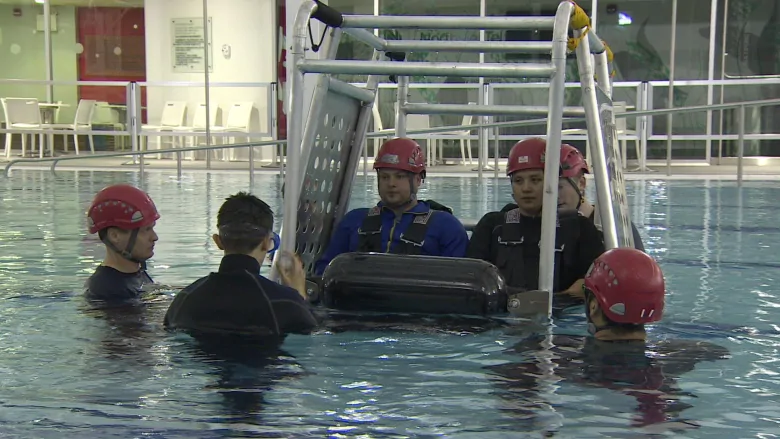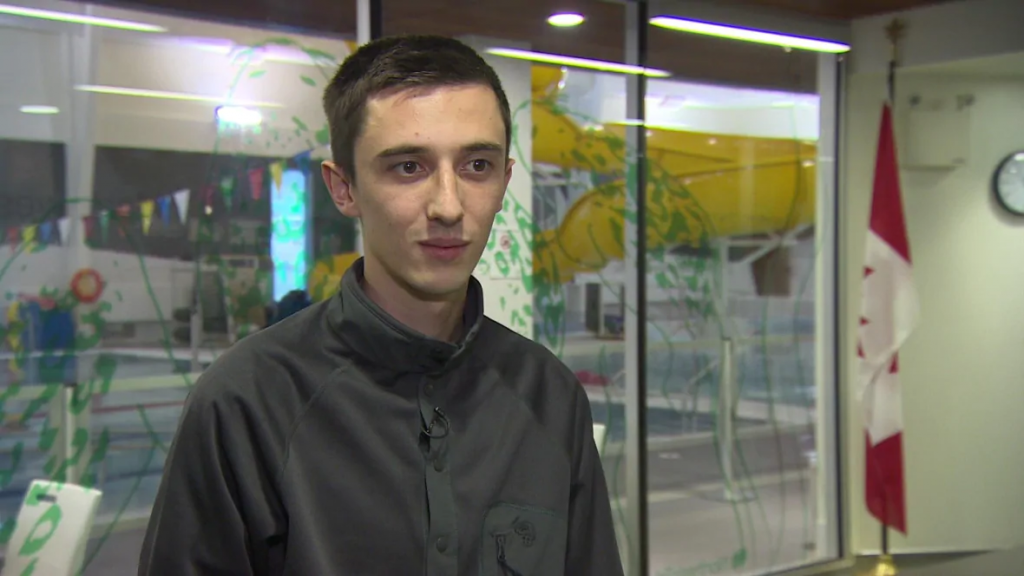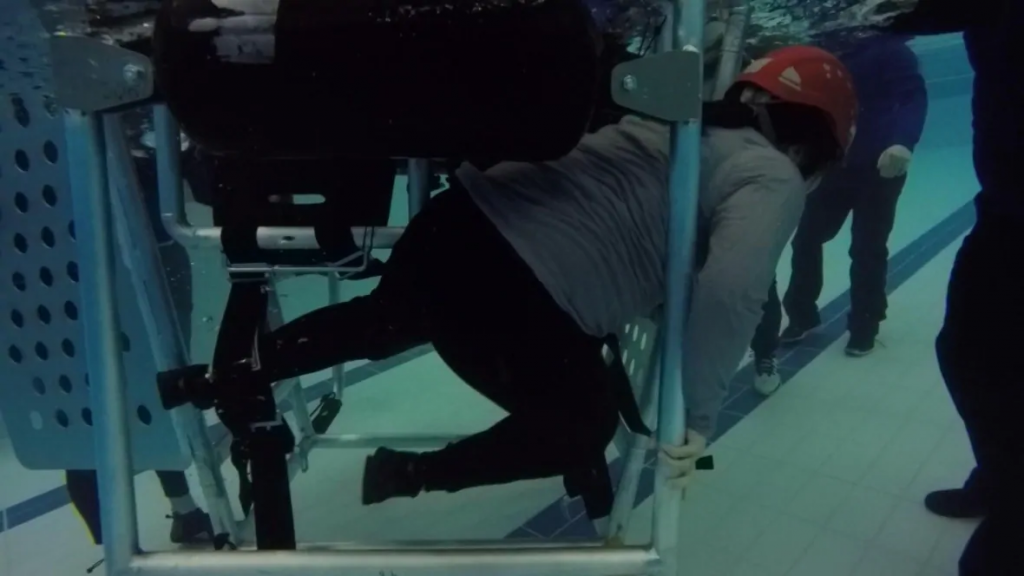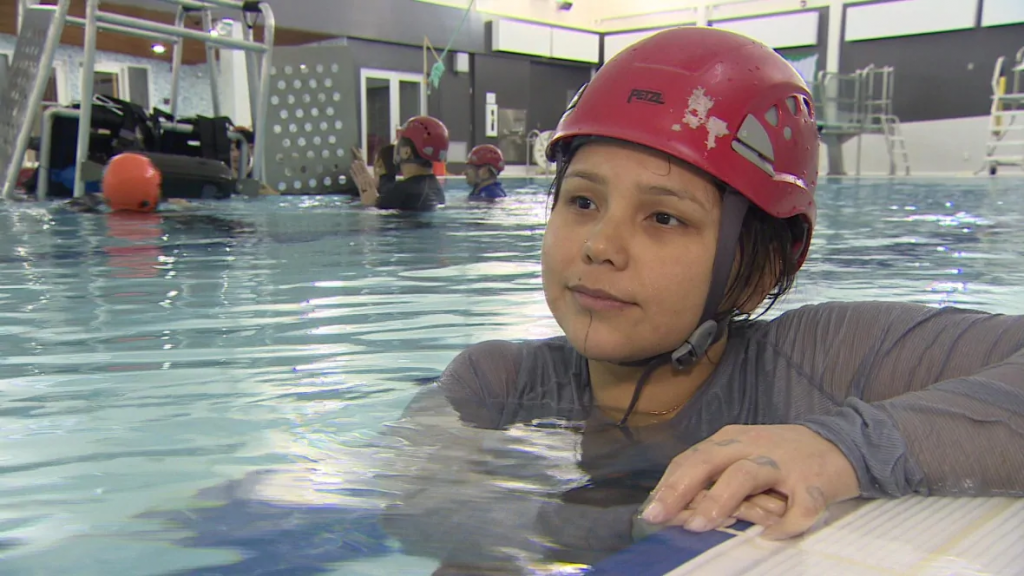Arctic Canada: Nunavut residents get underwater airplane escape training

You’re upside down and underwater, strapped into a metal cage by a harness-like seatbelt and the door beside you is bolted shut. You need to unlock the door, unstrap yourself and swim out.
This is one of the drills that’s being taught in a course at the Iqaluit Aquatic Centre’s pool this week, where participants learn skills on how to escape from a crashed airplane in water.

“Being able to run people through these simulations does increase survivability quite a bit,” said Eric Rarog, an instructor running the course from Arctic Response.
The class uses a metal cage equipped with floatation devices, two metal side doors that latch closed and airplane like seats. Two participants sit in the cage while the others flip it around.
Sometimes a door is held closed and you have to escape out the other. In other drills, one person pretends to be unconscious and you have to get both yourself and that person out.

Participants practice these drills in the pool with pants, shoes, and long sleeved shirts, to simulate what you’d be wearing on a plane.
It’s the first time Arctic Response has taught this course in Nunavut. The Nunavut Municipal Training Organization helped put on the class.
Many of the participants are government workers or search and rescue, but the class was also open to the public.
“[This] is good training up for people in the territories because you are flying to all these remote communities,” said Rarog. “If your plane does go down, you’re going to be in incredibly hostile and remote area.”
All Nunavut communities are fly in and fly out and flights to each travel over bodies of water.

Shauna Seeteenak took the course because she wants to do field work, which would require her to be in a lot of small planes and helicopters.
“It seems like I learned a lot today just by practicing doing that [drills],” said Seeteenak. “I’m always calm, but I think I’ll be a lot calmer.”
Related stories from around the North:
Canada: Arctic Canada: Nunavut’s Mars training ground now available on Google Street View, CBC
Finland: No plans to emulate Sweden’s crisis survival guide, says Finnish PM, Yle News
United States: Man survives being struck by a plane on sea ice north of Alaska, Alaska Dispatch News



